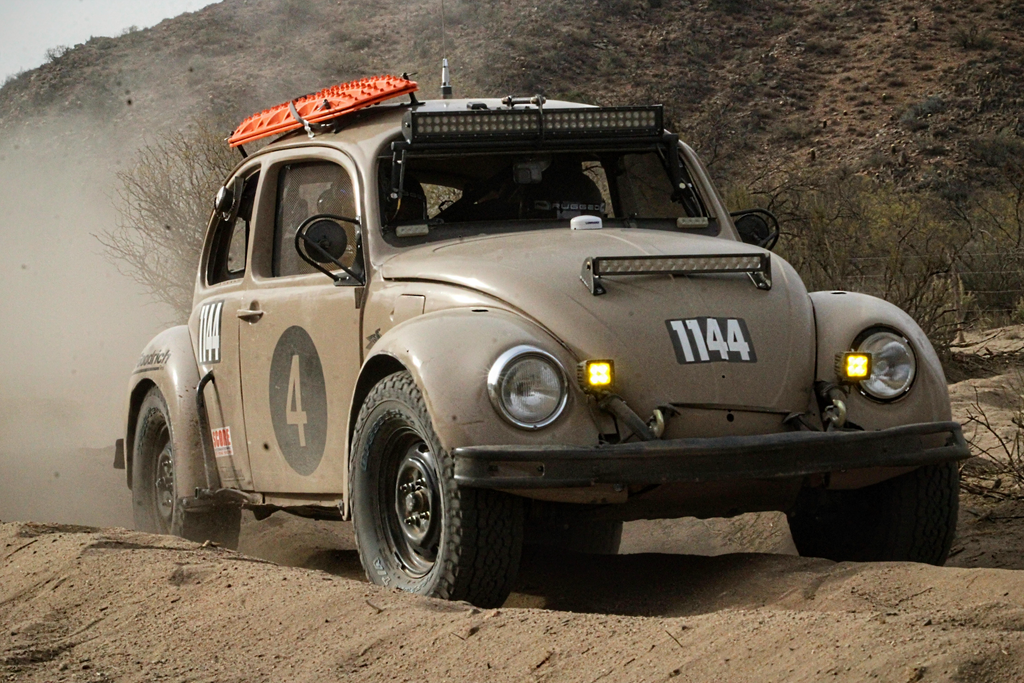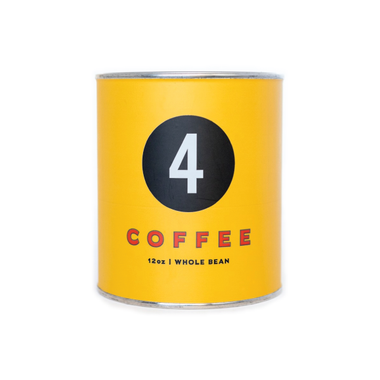On November 20th, the Fourtillfour team completed one of the toughest off-road races in the world: the Score International Baja 1000. This year, the nonstop, flat-out race took drivers from Ensenada to La Paz, a grueling one thousand, two hundred and twenty seven miles, and one of the longest Baja runs in history. This famously dangerous race is a hallmark in vintage racing, and completing it took a team of twenty and months of planning. It was an intense three days, and a rollercoaster of drama.
Shortly after completing the Peking to Paris rally in 2019, we set our eyes on a different type of endurance race. We had purchased our race car almost two years ago — a Class 11 bug built for short course racing, like the Mint 400. We had dialed this little machine for desert driving with the intention of running the Baja in it, but the modifications we made didn’t bring the car close to functioning at the rate it would need to in order to complete the race. The Baja 1000 demands a higher level of preparation to handle some of the most challenging terrain on the planet, and the bug was almost unrecognizable after the final preparations were made.

Class 11 vehicles are stock, Type 1 Volkswagen Beetles with a 1600cc motor. The only modifications allowed for 11s are for safety, ground clearance, and reinforcement. For us to have a chance in finishing the race, however, almost the whole car had to be rebuilt. Among other alterations, we added a larger fuel cell, brackets to hold down the spare parts and tools, close ratio transmission, GPS, and a 110w radio. We also added tow mounts, two light bars, amber lights, and a reinforced front beam. Other prep consisted of replacing most parts in the car, like the brakes, and completely rebuilding the motor. The car also had to be fitted with a full roll cage, and the drivers had to wear an inspected pre-approved suit, neck brace, and race helmet.

Being in Mexico added another layer of uncertainty to an already dangerous race. Only two days before the event, another team was held up by gunpoint while on a pre-run of the course, and their two race vehicles were stolen. Thankfully, no one was hurt, but this incident was a reminder of the risks we were undertaking by racing in a foreign country.

In the days leading up the race, we gathered the team together to strategize and divide the run between drivers and co-drivers, divvying up the twelve hundred mile course into stretches about two hundred and fifty miles in length. We also used this time to plot where the support and chase vehicles would be, and how we would run fuel to the car during stretches too long even for the oversized tank. On the map, it looked manageable, but miles of grueling terrain, miscommunication between drivers, and emergency repairs tested even our best laid plans.

Race Day
On race day, thousands of people lined the streets, cheering us and the other drivers. Already, all the long hours of preparation and the many sacrifices were worth it. The race was on. Just a few hours in, however, we were quickly humbled. We had not made it a tenth of the way before experiencing some serious car troubles. After a quick tie-rod replacement at Race Mile 25, we felt the pressure to make up lost time. Only a couple miles after that replacement, the bug kept slipping out of third gear, and we lost power. A violent noise began to emit from the engine in the middle of a silt bed. The sun was going down at RM110, but we were determined to fix the car and get back on the road. RM110 was inaccessible to our regular chase vehicles, so our side-by-side had to do back-and-forth trips to bring us the replacement parts. After replacing both the transmission and the motor in the middle of the desert, our spirits couldn’t be any lower. Our confidence was waning. Despite all the prep work and sacrifices, winning seemed out of the question, and now even finishing felt impossible. Usually, if a team faces these kinds of repairs early in the race, it’s cause for pulling out completely. The 50-hour time limit was feeling further and further out of reach. By the time the field repairs were complete, it was almost midnight and we had only traveled 150 miles. We knew it would be a miracle for nothing else to go wrong over the course of the next 1000 miles, and it was discouraging. Our pits would need to be quick, and we wouldn’t be able to afford getting stuck or breaking down any further, as we had depleted our stash of spare parts. We decided to push on, though, and drove through the night. Twenty four hours into the race, we were only four hundred miles in. We needed to make up some serious time if we wanted to finish.

We continued to push on, arriving at our pit stops with only minor breaks like cracked spindles, blown shocks, and flat tires, nothing our support team couldn’t quickly repair. Our spirits were lifted – we were back on the road and finally feeling like we were making some headway in the course. Despite the exhaustion, we entered into our second full night of driving. The sun was going down, but adrenaline allowed the team to push through. This night would be the ultimate test and we would need to dig deep. As night fell, the fog rolled in, obscuring our vision to less than ten feet, but at this point we were on pace to finish in time. There was the constant threat of getting stuck in the thick silt beds, but we were able to pass through them by pinning the car wide open in first gear and holding on.

By this time our front end was destroyed, the idle was stuck, our antenna had fallen off, disrupting communication with our chase crews, and we lost both our amber lights, which allow for visibility through fog and dust. In order for us to finish the race, however, there would be no time for these repairs.

The approaching dawn marked our second night of driving off-road in Baja. We had only a hundred and fifty miles left in the race, and despite the cliff lined, silt covered rough terrain, the end was in sight.

Forty-eight hours after leaving Ensenada, we had only ten miles to go, and we knew we would make it. The bug was unrecognizable after two days on some of the worst terrain possible, but crossing the finish line in La Paz as the crowd sprayed Tecate Lite on us was the most incredible experience.

It didn’t seem possible, but only forty hours earlier we were struggling with major repairs and coming to terms with the fact we probably wouldn’t be able to finish. Against all odds, though, our team found the energy and determination to continue, driving non-stop through two nights, pushing ourselves and our car to the limit. We were faced with just about everything Baja could throw at us. Besides the overwhelming fatigue, we encountered wrong-way drivers, animals and spectators crossing the track, race cars bumping us, and everything in between.

People ask if we would do it again. The short answer is, hell yes! Everything about this race is so special. The Class 11 teams have a different spirit and heart, having the determination to race despite having the odds stacked against them. The stock Volkswagen Beetle is an incredible little car, but it’s the drivers, co-drivers, chase teams, mechanics, and everyone in between that gets the car from start to finish.
The Baja 1000 was the ultimate challenge, testing our wills and spirits, forcing us to dig deep within ourselves in order to finish. We are beyond grateful for this unforgettable opportunity, and we’ve left Mexico with a greater understanding of who we are, and what we are able to accomplish.

The Baja 1000 endeavor was a group effort and although Team Fourtillfour was small, it was extremely talented and resilient. A huge thank you to each and every individual on the team. Special thanks to Mobil 1 for helping us get across the finish line. Our follow up blog will be a Q&A type format. If you have any questions about the race, or are interested in becoming part of a future team, please email hello@fourtillfour.com




